Conserving the Silent Sustainers - The Need for Soil Biodiversity Conservation
Soil biodiversity is often the unsung hero of our ecosystems, working tirelessly beneath our feet to support life as we know it. Imagine a world where the soil is not just dirt, but a vibrant community of organisms, each playing a vital role in nutrient cycling, plant growth, and overall ecosystem health. These tiny yet powerful beings, from bacteria and fungi to insects and earthworms, contribute to the very fabric of our planet's life support system. Unfortunately, their importance is frequently overlooked, leading to alarming consequences for our environment and food systems.
As we delve into the significance of soil biodiversity, it’s essential to recognize that these organisms are not just random inhabitants of the ground; they are the backbone of sustainable agriculture and natural ecosystems. They enhance soil structure, improve water retention, and facilitate the decomposition of organic matter, which is crucial for nutrient availability. In a sense, they are the silent sustainers, working behind the scenes to ensure that life flourishes above ground. Without them, our agricultural productivity would plummet, and the health of our ecosystems would be severely compromised.
However, the threats facing soil biodiversity are numerous and daunting. From intensive agricultural practices that strip the land of its natural inhabitants to urbanization that encroaches on natural habitats, human activities have a profound impact on soil health. It’s a bit like a house of cards; when one card is removed, the entire structure becomes unstable. The loss of soil biodiversity can lead to decreased resilience against pests and diseases, reduced crop yields, and even environmental degradation.
In light of these challenges, the need for effective conservation strategies becomes glaringly evident. We must adopt practices that not only protect but also enhance soil biodiversity. This includes sustainable farming methods that prioritize organic inputs over chemical fertilizers and pesticides, as well as initiatives aimed at restoring natural habitats. By fostering a deeper understanding of the interconnectedness between soil organisms and the overall health of our ecosystems, we can begin to implement meaningful changes.
Moreover, government policies play a crucial role in promoting soil biodiversity conservation. Effective regulations can incentivize sustainable practices and provide the necessary support for research and education. However, the current policies often fall short, highlighting the need for stronger frameworks that prioritize the protection of these vital ecosystems. Engaging local communities in these efforts is equally important; after all, they are the stewards of the land and can contribute significantly to conservation initiatives.
In conclusion, conserving soil biodiversity is not just an environmental issue; it’s a matter of ensuring food security and ecological balance for future generations. As we move forward, ongoing research will be paramount in unraveling the complexities of soil ecosystems and developing innovative solutions for their conservation. Together, we can champion the cause of these silent sustainers, ensuring that they continue to thrive and support life on Earth.
- What is soil biodiversity? Soil biodiversity refers to the variety of organisms living in the soil, including bacteria, fungi, insects, and other microorganisms that contribute to soil health and ecosystem functions.
- Why is soil biodiversity important? Soil biodiversity is crucial for nutrient cycling, plant growth, and maintaining the overall health of ecosystems. It supports agricultural productivity and helps in the decomposition of organic matter.
- What are the main threats to soil biodiversity? Major threats include intensive agricultural practices, urbanization, pollution, and climate change, all of which can degrade soil health and reduce biodiversity.
- How can we conserve soil biodiversity? Conservation strategies include adopting sustainable farming practices, restoring natural habitats, and implementing supportive government policies to protect soil ecosystems.
- What role do communities play in soil conservation? Local communities can engage in conservation efforts through education, sustainable land management practices, and participating in restoration projects.
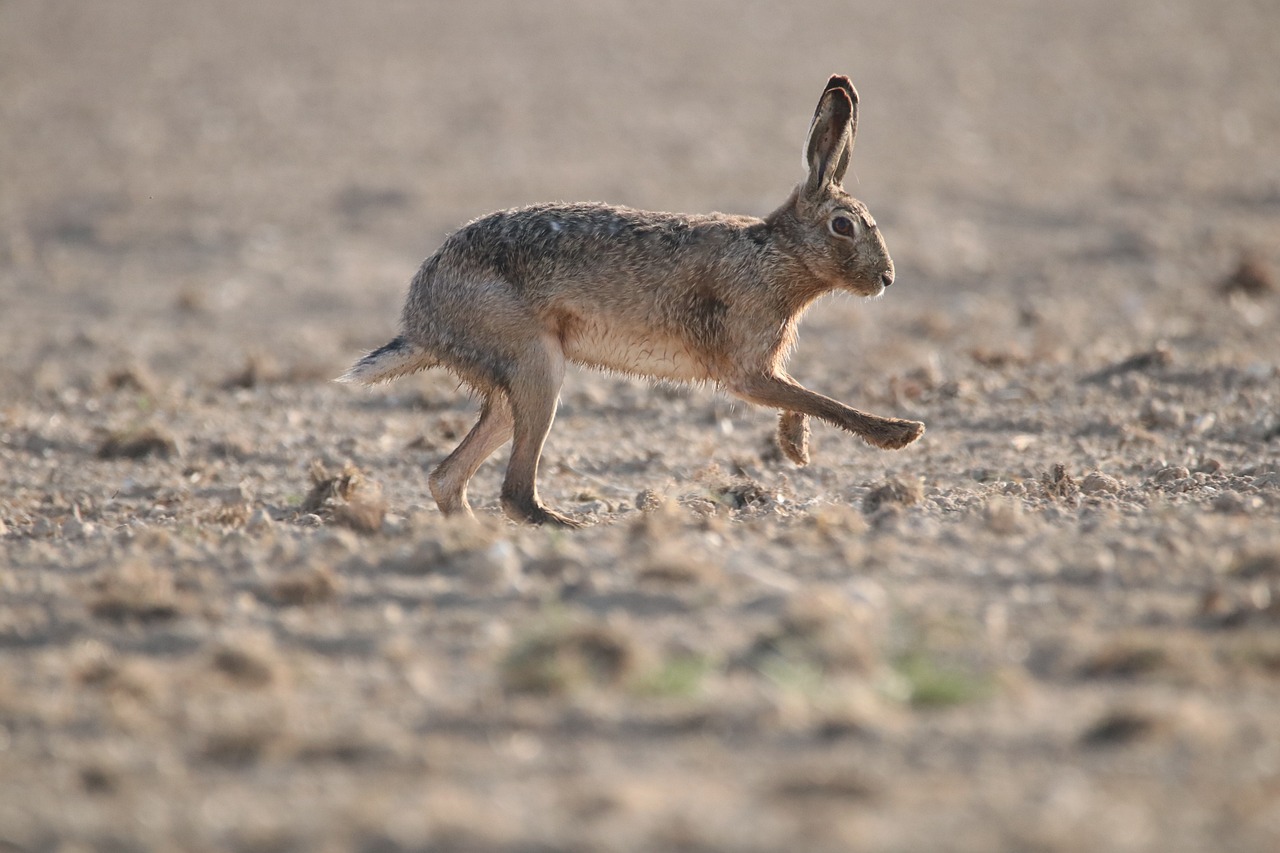
The Importance of Soil Biodiversity
Soil biodiversity is often overlooked, yet it is the unsung hero of our ecosystems. Imagine soil as a bustling city, teeming with life, where every organism plays a unique role in maintaining the balance of nature. From microscopic bacteria to larger organisms like earthworms, each contributes to the health of our planet in ways we might not even realize. These organisms are essential for nutrient cycling, which is the process of breaking down organic matter and recycling nutrients back into the soil. This cycle is crucial for plant growth, as healthy plants rely on nutrient-rich soil to thrive.
Moreover, soil biodiversity enhances the resilience of ecosystems. Just like a diverse community can withstand social challenges better than a homogenous one, diverse soil organisms can better cope with environmental stresses such as drought, floods, and disease. When soil is rich in biodiversity, it is more capable of recovering from disturbances, which is vital for maintaining agricultural productivity and natural ecosystems alike.
Furthermore, the interconnectedness of soil organisms plays a surprising role in our food systems. For instance, mycorrhizal fungi form symbiotic relationships with plant roots, improving their access to water and nutrients. This relationship not only boosts plant health but also enhances crop yields, proving that healthy soil biodiversity directly impacts food security. In fact, studies have shown that farms with higher soil biodiversity often yield more productive crops than those relying on conventional farming methods.
To illustrate the importance of soil biodiversity, consider the following table that highlights some key roles of various soil organisms:
| Soil Organism | Role in Ecosystem |
|---|---|
| Bacteria | Decompose organic matter and recycle nutrients |
| Fungi | Form symbiotic relationships with plants and enhance nutrient uptake |
| Earthworms | Improve soil structure and aeration, promoting better water infiltration |
| Protozoa | Control bacterial populations and contribute to nutrient cycling |
In summary, the importance of soil biodiversity cannot be overstated. It is the backbone of healthy ecosystems and sustainable food systems. Protecting and enhancing soil biodiversity should be a priority for everyone, from policymakers to farmers and even the average consumer. By understanding the vital roles that soil organisms play, we can take actionable steps towards preserving this precious resource for future generations.
- What is soil biodiversity? Soil biodiversity refers to the variety of organisms living in the soil, including bacteria, fungi, insects, and larger animals like earthworms.
- Why is soil biodiversity important? It is essential for nutrient cycling, plant growth, ecosystem resilience, and overall environmental health.
- How can we protect soil biodiversity? Implementing sustainable farming practices, reducing pollution, and restoring natural habitats are effective ways to protect soil biodiversity.
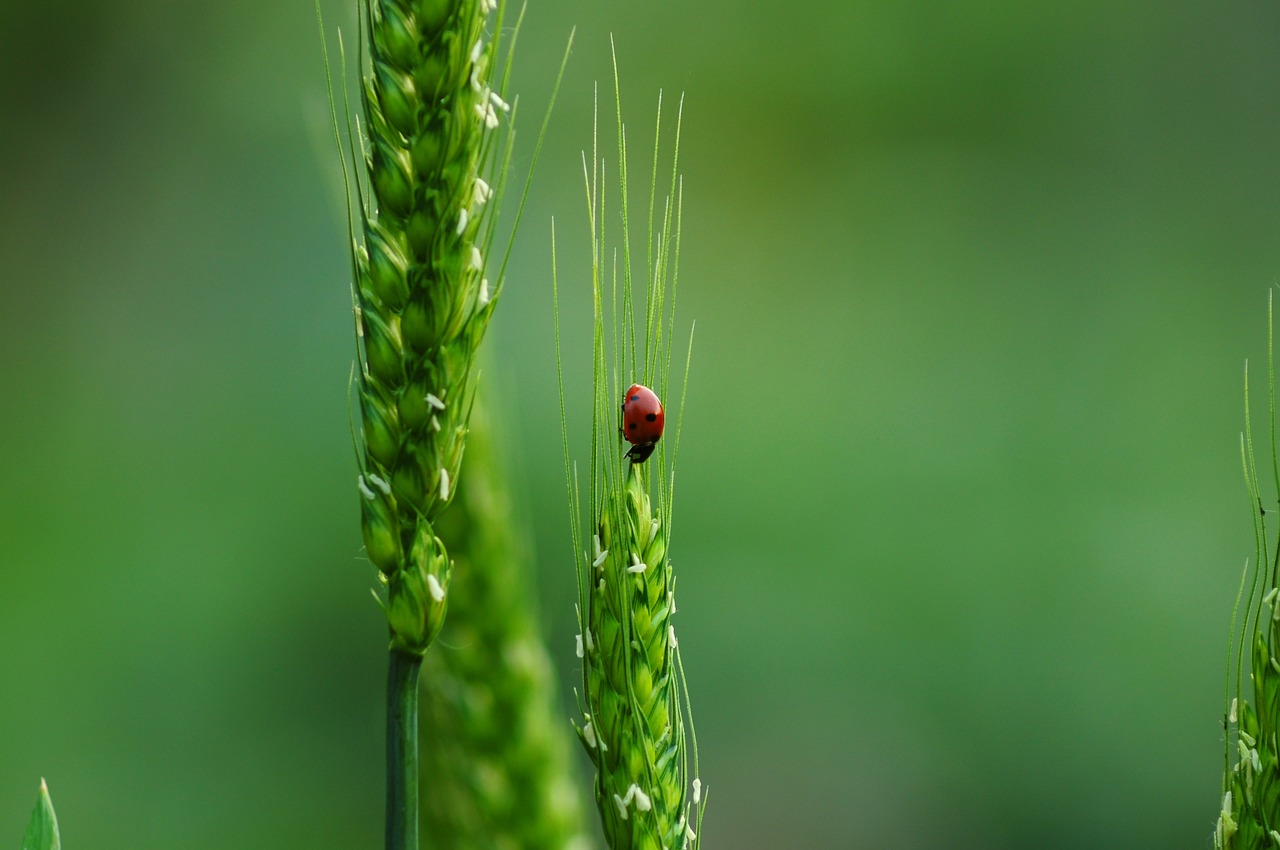
Threats to Soil Biodiversity
Soil biodiversity is a complex and intricate web of life that is essential for maintaining healthy ecosystems. Unfortunately, various human activities are putting this vital resource at risk. Understanding these threats is crucial for developing effective conservation strategies. One of the most significant threats to soil biodiversity comes from agriculture. While farming is necessary for food production, intensive agricultural practices often lead to the degradation of soil health. The use of monocultures, where a single crop is planted over large areas, can severely limit the diversity of soil organisms. This lack of diversity can make the soil more susceptible to diseases and pests, creating a vicious cycle that further diminishes the health of the soil.
Moreover, the heavy reliance on chemical fertilizers and pesticides in conventional farming practices can have detrimental effects on soil organisms. These chemicals can disrupt the natural balance of life in the soil, killing beneficial microbes and insects that play a crucial role in nutrient cycling and organic matter decomposition. As a result, the soil becomes less fertile, leading farmers to apply even more chemicals, which exacerbates the problem.
Another major threat is soil erosion, which not only depletes nutrient-rich topsoil but also disrupts habitats for diverse organisms. When topsoil is washed away or blown off, it takes with it the very foundation of fertile land. The long-term impacts of erosion can lead to reduced agricultural productivity and a decline in soil biodiversity. This process is often accelerated by poor land management practices, such as overgrazing and deforestation.
Furthermore, pollution poses a significant risk to soil organisms. Chemical pollutants, including heavy metals, plastics, and agricultural runoff, can accumulate in the soil and harm the organisms that reside there. For instance, heavy metals can be toxic to earthworms and microorganisms, leading to a decline in their populations. This decline can disrupt the entire ecosystem, as these organisms are vital for maintaining soil structure and fertility. The presence of plastics in the soil can also hinder the movement and activity of soil organisms, further exacerbating the decline in biodiversity.
In summary, the threats to soil biodiversity are multifaceted, stemming from agricultural practices, erosion, and pollution. Each of these factors contributes to a decline in the health of our soils, which in turn affects our ecosystems and food systems. Addressing these threats requires a comprehensive approach that includes sustainable farming practices, effective land management, and pollution control measures to safeguard the intricate life that exists beneath our feet.
- What is soil biodiversity? Soil biodiversity refers to the variety of living organisms in the soil, including bacteria, fungi, insects, and larger animals. These organisms play critical roles in nutrient cycling, soil structure, and plant health.
- Why is soil biodiversity important? Healthy soil biodiversity is essential for ecosystem functioning, agricultural productivity, and environmental sustainability. It helps in nutrient cycling, pest control, and maintaining soil health.
- How does agriculture threaten soil biodiversity? Intensive farming practices, such as monoculture and the use of chemical fertilizers and pesticides, can degrade soil health and reduce biodiversity, leading to a less resilient ecosystem.
- What can be done to protect soil biodiversity? Implementing sustainable farming practices, promoting organic farming, restoring habitats, and reducing pollution can all contribute to the conservation of soil biodiversity.
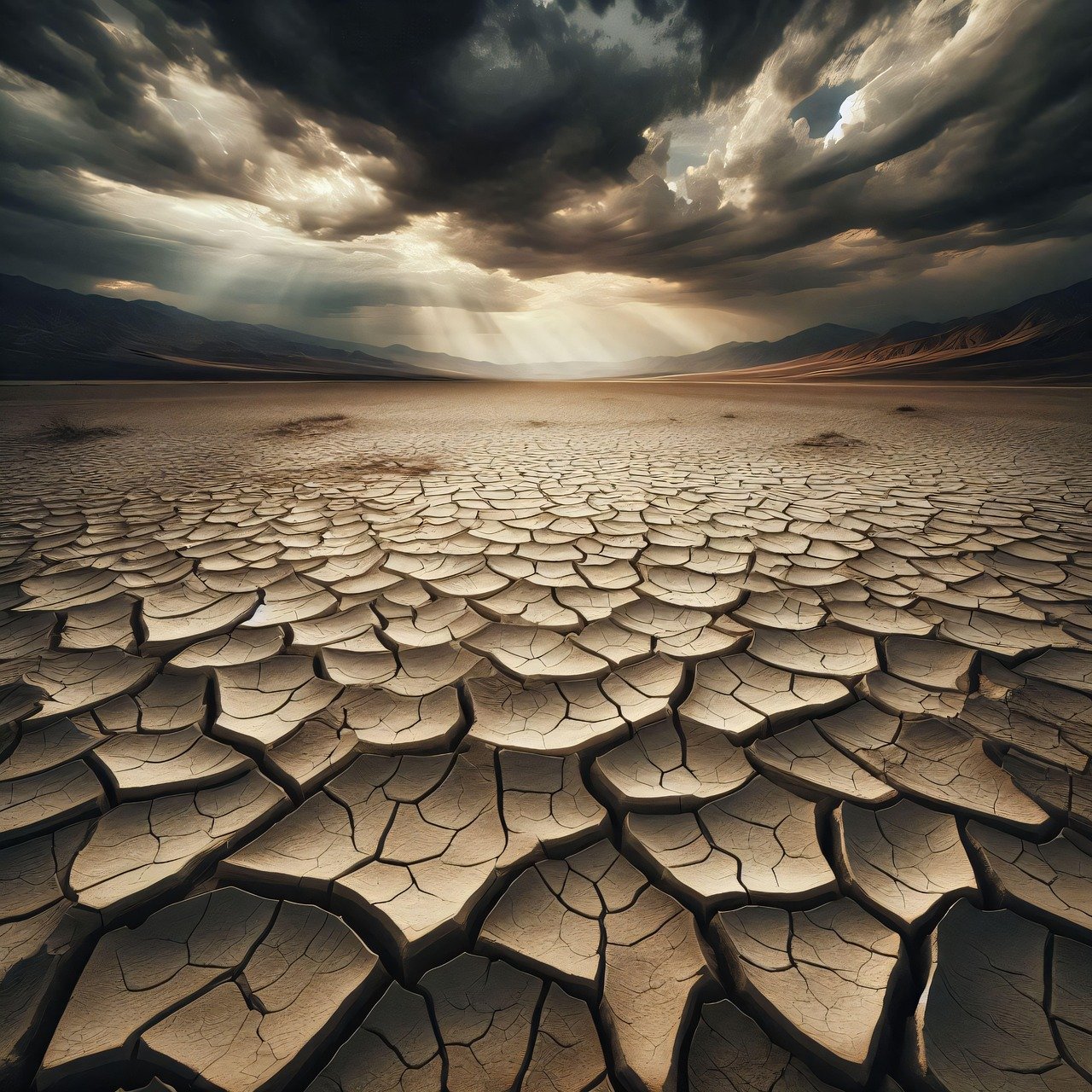
Impact of Agriculture on Soil Life
Agriculture is often hailed as the backbone of human civilization, providing food and resources essential for survival. However, this vital sector can also be a double-edged sword when it comes to soil health. The practices employed in modern agriculture, particularly intensive farming methods, have significant repercussions on soil biodiversity. It's essential to understand these impacts to appreciate the delicate balance that sustains our ecosystems.
One of the most glaring issues is **monoculture**, the practice of growing a single crop over an extensive area for many consecutive years. While this method can yield short-term economic benefits, it leads to a dramatic decline in soil organisms. Diverse soil life, from bacteria to fungi, plays a crucial role in nutrient cycling and soil structure. When the same crop is planted repeatedly, the soil becomes depleted of specific nutrients, and beneficial organisms that thrive in diverse environments are unable to survive. As a result, the soil's resilience diminishes, making it more susceptible to pests and diseases.
Moreover, the heavy reliance on **chemical fertilizers** and **pesticides** compounds this problem. While these substances can enhance crop yields, they often come at a steep cost to soil health. Chemical fertilizers can disrupt the natural nutrient balance in the soil, leading to a decline in microbial diversity. Furthermore, pesticides, designed to eliminate pests, do not discriminate; they can kill beneficial soil organisms that contribute to a healthy ecosystem. The result is a vicious cycle: as soil life diminishes, the soil's ability to support plant life weakens, leading farmers to apply even more chemicals to compensate.
Another critical factor to consider is **soil erosion**, which is frequently exacerbated by agricultural practices. When land is cleared for farming, especially in the absence of cover crops or crop rotation, the protective layer of vegetation is removed. This exposes the soil to wind and water erosion, stripping away nutrient-rich topsoil. The long-term effects of erosion are devastating: not only does it reduce soil fertility, but it also disrupts habitats for countless organisms that call the soil home. The loss of these organisms can lead to decreased agricultural productivity, creating a cycle that is challenging to break.
In addition to these practices, **agricultural runoff** poses another threat to soil life. When rain washes excess fertilizers and pesticides into nearby waterways, it can lead to contamination of the soil and surrounding ecosystems. This pollution can have a cascading effect, harming aquatic life and further disrupting the delicate balance of the ecosystem. The heavy metals and plastics that often accompany agricultural runoff can persist in the environment, accumulating in the soil and causing long-term damage to soil organisms.
In summary, while agriculture is essential for feeding the world's population, the methods employed can significantly impact soil biodiversity. The challenges posed by monoculture, chemical inputs, soil erosion, and pollution highlight the urgent need for a shift towards more sustainable farming practices. By recognizing the intricate relationship between agriculture and soil life, we can work towards a future where both can thrive in harmony.
- What is soil biodiversity? Soil biodiversity refers to the variety of organisms living in the soil, including bacteria, fungi, insects, and larger animals. These organisms play essential roles in nutrient cycling, soil structure, and overall ecosystem health.
- How does agriculture affect soil health? Intensive agricultural practices can lead to soil degradation, reduced biodiversity, and nutrient depletion, negatively impacting soil health and productivity.
- What are some sustainable farming practices? Sustainable farming practices include crop rotation, cover cropping, reduced chemical use, and organic farming, all of which promote soil health and biodiversity.
- Why is soil erosion a concern? Soil erosion removes the nutrient-rich topsoil necessary for plant growth, disrupts habitats for soil organisms, and can lead to decreased agricultural productivity over time.
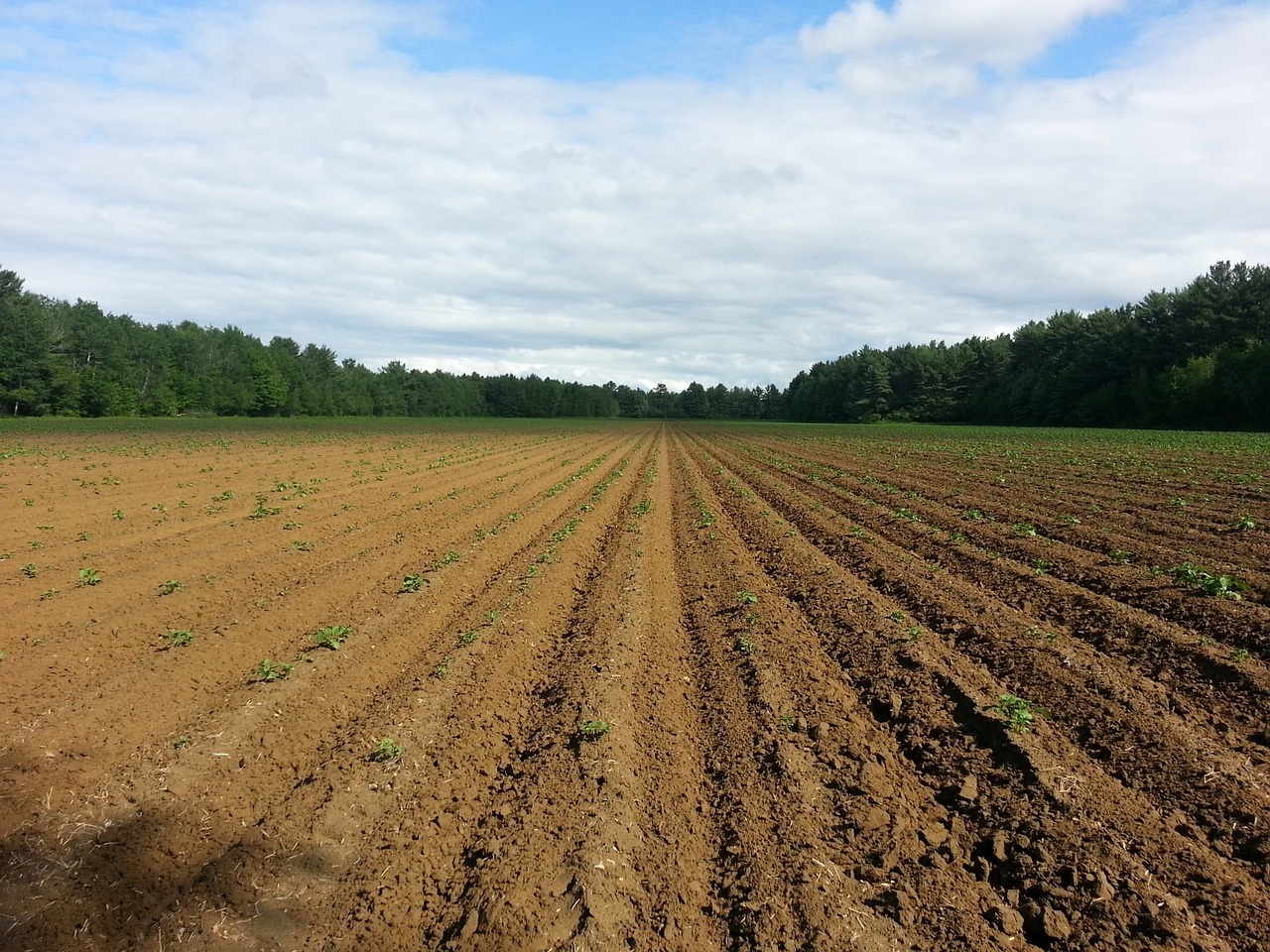
Soil Erosion and Its Effects
Soil erosion is more than just a natural process; it’s a silent thief that steals away the very foundation of our ecosystems. Imagine a house built on a shaky foundation; eventually, it will crumble. Similarly, when we lose our topsoil, we jeopardize the health of the land and all that it supports. This top layer of soil is where most of the nutrient-rich material resides, and its loss can lead to dire consequences for agriculture and biodiversity.
One of the primary effects of soil erosion is the depletion of vital nutrients. As the topsoil erodes, it takes with it essential elements like nitrogen, phosphorus, and potassium, which are crucial for plant growth. Without these nutrients, crops can suffer, leading to reduced yields. This is not just a problem for farmers; it impacts food security for everyone. In fact, studies have shown that erosion can reduce agricultural productivity by up to 50% in some areas.
Moreover, soil erosion disrupts the habitats of countless organisms that call the soil home. From earthworms to beneficial microbes, these creatures play a pivotal role in maintaining soil health and fertility. When their habitats are destroyed, it leads to a decline in biodiversity. Just like a chain reaction, the loss of one species can impact others, creating a ripple effect throughout the ecosystem.
Another significant consequence of soil erosion is sedimentation in water bodies. As soil is washed away, it often ends up in rivers and lakes, leading to increased turbidity. This can harm aquatic life by reducing sunlight penetration and disrupting the natural balance of these ecosystems. Additionally, sedimentation can lead to the accumulation of pollutants, further degrading water quality.
To put it into perspective, consider a table that outlines the impacts of soil erosion:
| Impact | Description |
|---|---|
| Nutrient Depletion | Loss of essential nutrients leads to reduced crop yields and food insecurity. |
| Biodiversity Loss | Destruction of habitats for soil organisms results in a decline in biodiversity. |
| Water Quality Degradation | Soil runoff leads to sedimentation and pollution in water bodies, harming aquatic ecosystems. |
In conclusion, soil erosion is not just an environmental concern; it’s a challenge that affects our food systems, ecosystems, and ultimately our survival. By understanding its effects, we can implement better practices to combat erosion and protect our precious soil resources. It’s essential to recognize that every action counts, and together, we can make a difference in conserving the silent sustainers of our planet.
- What causes soil erosion? Soil erosion can be caused by water, wind, human activities like deforestation, and poor agricultural practices.
- How can we prevent soil erosion? Practices such as crop rotation, cover cropping, and building terraces can help reduce soil erosion.
- Why is soil biodiversity important? Soil biodiversity contributes to nutrient cycling, plant growth, and overall ecosystem health.
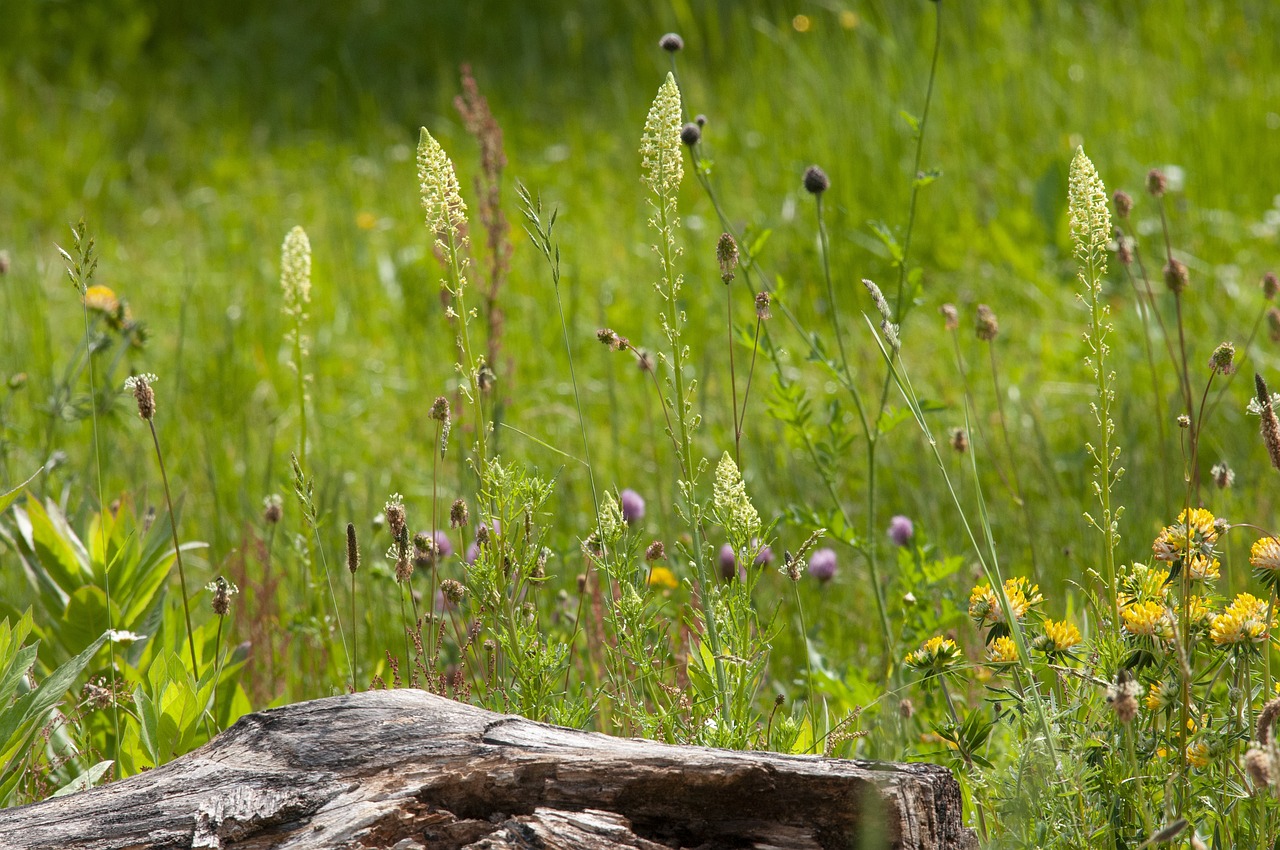
Pollution and Soil Organisms
Soil is often viewed as a mere backdrop for plant life, but in reality, it is a bustling metropolis teeming with organisms that play vital roles in our ecosystem. Unfortunately, pollution is like a dark cloud hanging over this vibrant community, casting shadows on the delicate balance that sustains life beneath our feet. When we think of pollution, we might picture smog-filled skies or litter-strewn streets, but the reality is that our soils are also under siege from various contaminants.
One of the most insidious forms of pollution affecting soil organisms comes from heavy metals, which can seep into the ground through industrial waste, mining activities, and even household products. These toxic metals, including lead, cadmium, and arsenic, can accumulate in the soil, leading to a decline in microbial diversity. When the soil's microbial community is compromised, it can disrupt essential processes such as nutrient cycling and organic matter decomposition. This means that plants may struggle to access the nutrients they need to grow, which can ultimately impact our food supply.
Moreover, plastics are another significant pollutant that poses a threat to soil health. As plastic waste breaks down into microplastics, these tiny particles can infiltrate the soil ecosystem, where they may be ingested by soil organisms. The ingestion of microplastics can lead to physical harm and even death for these organisms, further destabilizing the soil's ecological balance. The presence of plastics can also hinder water retention and nutrient availability, creating a ripple effect that impacts plant growth and overall soil health.
Additionally, agricultural runoff laden with fertilizers and pesticides can wreak havoc on soil biodiversity. When rain washes these chemicals into nearby fields and streams, they can create a toxic environment for soil organisms. Pesticides, in particular, are designed to kill pests, but they can also harm beneficial insects and microorganisms that contribute to soil health. This contamination can lead to a phenomenon known as biomagnification, where toxins build up in the food chain, ultimately affecting larger animals and even humans who rely on these ecosystems.
To illustrate the impact of pollution on soil organisms, consider the following table that summarizes the effects of different pollutants:
| Pollutant | Source | Impact on Soil Organisms |
|---|---|---|
| Heavy Metals | Industrial waste, mining | Decline in microbial diversity, nutrient cycling disruption |
| Plastics | Waste disposal, packaging | Physical harm, water retention issues |
| Agricultural Runoff | Fertilizers, pesticides | Toxic environment, biomagnification risks |
Addressing the issue of pollution in our soils requires a concerted effort from all of us. By adopting sustainable agricultural practices, reducing plastic use, and advocating for stricter regulations on industrial waste, we can help protect these vital ecosystems. Remember, the health of our soil is intricately linked to the health of our planet. If we want to ensure a sustainable future, we must pay attention to the silent sustainers beneath our feet.
- What are soil organisms? Soil organisms include a wide variety of life forms, such as bacteria, fungi, earthworms, and insects that contribute to soil health and ecosystem functions.
- How does pollution affect soil biodiversity? Pollution can introduce toxic substances into the soil, harming or killing beneficial organisms and disrupting essential ecological processes.
- What can I do to help protect soil biodiversity? You can adopt sustainable gardening practices, reduce plastic waste, and support policies aimed at protecting soil health.
- Are there any regulations in place to protect soil biodiversity? Yes, various environmental regulations exist, but many advocates argue for stronger policies and enforcement to better protect soil ecosystems.

Conservation Strategies for Soil Biodiversity
When it comes to conserving soil biodiversity, we must think of it as nurturing a delicate web of life that supports everything from our towering trees to the food on our plates. The strategies we employ can be likened to a gardener tending to a flourishing garden, ensuring that every plant, insect, and microorganism has the right conditions to thrive. One of the most effective approaches is the adoption of sustainable farming practices. These practices not only aim to enhance soil health but also promote a diverse array of organisms that contribute to nutrient cycling and ecosystem resilience.
Integrating cover crops into agricultural systems is a prime example of how we can encourage soil biodiversity. Cover crops, such as clover or rye, are planted during off-seasons to protect the soil from erosion and add organic matter back into the ground. This not only improves soil structure but also provides habitat for various soil organisms, from earthworms to beneficial fungi. Furthermore, these crops can help suppress weeds and reduce the need for chemical herbicides, creating a more balanced ecosystem.
Another strategy involves crop rotation. By rotating different crops each season, farmers can disrupt pest and disease cycles while enhancing soil fertility. Different plants have varying nutrient needs and root structures, which can lead to a more dynamic and resilient soil ecosystem. This practice not only boosts biodiversity but also contributes to a healthier food system by reducing dependency on chemical fertilizers.
Moreover, habitat restoration plays a crucial role in soil biodiversity conservation. Restoring degraded lands, such as former agricultural fields or polluted areas, involves reintroducing native plants and creating conditions that allow soil organisms to recover. This can be compared to giving a tired athlete a break and then training them back to peak performance. The revitalization of these ecosystems can lead to increased biodiversity, improved water retention, and enhanced carbon sequestration, all of which are vital for combating climate change.
While these strategies are essential, they must be supported by effective policy frameworks. Governments can incentivize sustainable practices through subsidies, grants, and education programs that empower farmers to adopt biodiversity-friendly methods. By creating a supportive environment, we can foster a culture of conservation that resonates through communities and industries alike.
In conclusion, conserving soil biodiversity is not just about protecting a resource; it’s about ensuring the health of our planet. By implementing sustainable practices, restoring habitats, and supporting policies that promote biodiversity, we can cultivate a thriving ecosystem that benefits both nature and humanity. This is a collective effort, and every action counts—like drops of water that eventually fill a vast ocean.
- What is soil biodiversity? Soil biodiversity refers to the variety of living organisms in the soil, including bacteria, fungi, insects, and larger animals that contribute to soil health and ecosystem functioning.
- Why is soil biodiversity important? It plays a crucial role in nutrient cycling, plant growth, and overall ecosystem health, influencing food production and environmental sustainability.
- How can I contribute to soil biodiversity conservation? You can start by practicing sustainable gardening techniques, such as composting, using native plants, and minimizing chemical use.
- What are some sustainable farming practices? Some effective practices include crop rotation, cover cropping, reduced tillage, and organic farming methods.
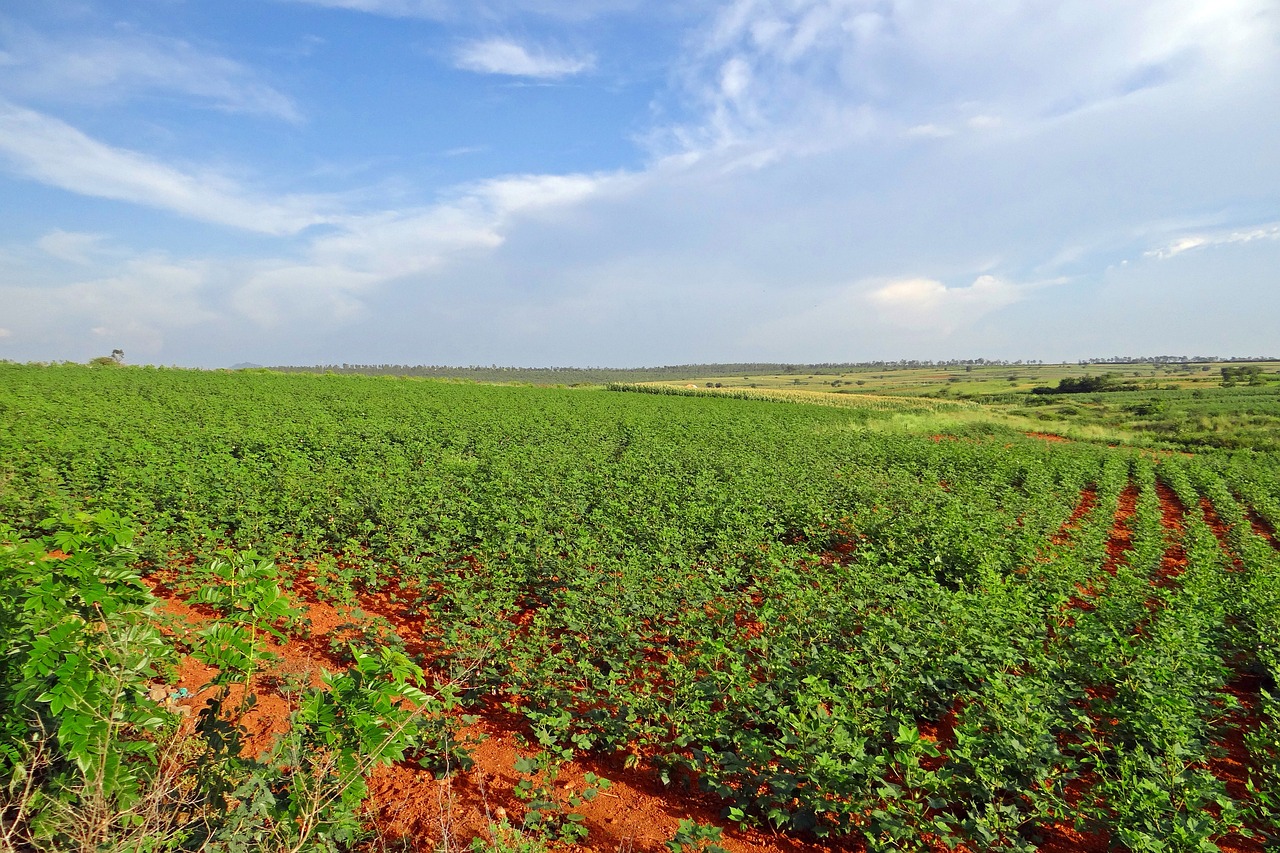
Role of Policy in Soil Conservation
Government policies are the backbone of effective soil conservation efforts. They set the framework within which various stakeholders—farmers, businesses, and communities—can operate to protect and enhance soil biodiversity. Without robust policies, the delicate balance of our soil ecosystems is at risk. But what exactly do these policies entail, and how can they significantly impact soil health?
First and foremost, policies can create incentives for sustainable farming practices. For example, governments can offer subsidies for farmers who adopt organic farming techniques or implement crop rotation strategies. This not only boosts soil health but also promotes biodiversity by encouraging a variety of crops, which is crucial for maintaining ecosystem balance. Additionally, regulations that limit the use of harmful chemicals can directly protect soil organisms from degradation.
Moreover, policies play a critical role in soil restoration initiatives. Through funding and support, governments can facilitate programs aimed at rehabilitating degraded lands. These initiatives often include
- Reforestation efforts
- Wetland restoration
- Community education programs
Another important aspect of policy is the enforcement of land-use regulations. Zoning laws and land-use planning can prevent urban sprawl from encroaching on agricultural lands, thereby preserving vital soil resources. Furthermore, policies that promote agroecology can help create a more resilient agricultural system that is less dependent on chemical inputs, thus enhancing soil biodiversity.
However, it’s not enough to have policies in place; they must also be effectively implemented and monitored. This requires a commitment from government bodies to ensure compliance and to adapt policies based on ongoing research and feedback from the community. Engaging stakeholders in the policy-making process can lead to more effective outcomes, as local knowledge and experiences can provide valuable insights into the challenges and opportunities faced at the ground level.
To illustrate the effectiveness of well-structured policies, consider the following table that compares regions with strong soil conservation policies against those with weak regulations:
| Region | Soil Health Index | Biodiversity Level | Policy Strength |
|---|---|---|---|
| Region A | 85 | High | Strong |
| Region B | 60 | Medium | Moderate |
| Region C | 40 | Low | Weak |
This table clearly demonstrates that regions with strong policies tend to have better soil health and higher biodiversity levels. As we move forward, it is essential that governments recognize the value of soil as a finite resource and prioritize its conservation through effective policy frameworks.
In conclusion, the role of policy in soil conservation cannot be overstated. It is the driving force behind sustainable practices, restoration initiatives, and effective land management strategies. By fostering a collaborative environment among all stakeholders, and ensuring rigorous enforcement of regulations, we can pave the way for healthier soils and a more sustainable future.
Q: Why is soil biodiversity important?
A: Soil biodiversity is crucial because it supports nutrient cycling, plant growth, and the overall health of ecosystems.
Q: What are some common threats to soil biodiversity?
A: Threats include intensive agriculture, urbanization, pollution, and soil erosion, all of which can degrade soil health.
Q: How can policies enhance soil conservation?
A: Policies can promote sustainable practices, provide funding for restoration, and enforce regulations that protect soil health.
Q: What role do communities play in soil conservation?
A: Communities can engage in conservation efforts through education, local initiatives, and participation in policy-making processes.

Community Involvement in Conservation
Community involvement in soil biodiversity conservation is not just a fancy idea; it’s a game changer! When local communities engage in conservation efforts, they bring a wealth of knowledge, passion, and commitment to the table. Think about it: who knows the land better than the people who live and work on it daily? Their firsthand experience can lead to more effective and sustainable practices that benefit both the soil and the ecosystem as a whole.
One of the most exciting aspects of community involvement is the potential for grassroots movements to emerge. These movements can raise awareness about soil biodiversity issues and mobilize individuals to take action. For example, community workshops can be organized to educate residents about the importance of soil health and the role of various organisms in maintaining that health. Imagine a neighborhood coming together to learn about composting, organic gardening, or even creating pollinator gardens. These activities not only enhance soil biodiversity but also foster a sense of community and shared responsibility.
Furthermore, community members can participate in local conservation projects, such as:
- Restoration of degraded lands: By working together to restore areas that have suffered from erosion or pollution, communities help rejuvenate local ecosystems.
- Monitoring soil health: Engaging in citizen science initiatives allows residents to track changes in soil quality and biodiversity over time, providing valuable data for researchers.
- Advocacy for policy changes: When communities unite, they can effectively advocate for stronger regulations and support for soil conservation at local and national levels.
Moreover, schools can play a pivotal role in this movement. Incorporating soil education into the curriculum can inspire the next generation to appreciate and protect this vital resource. Imagine children learning about soil organisms through hands-on activities, like digging in the dirt and observing the life that thrives beneath their feet. This early exposure can instill a lifelong commitment to conservation.
However, it’s important to recognize that successful community involvement requires support and resources. Local governments and organizations can facilitate this process by providing training, funding, and access to tools and materials. By creating an environment where community members feel empowered and equipped to take action, we can collectively enhance soil biodiversity and ensure a healthier ecosystem for future generations.
Q: Why is community involvement important for soil biodiversity conservation?
A: Community involvement brings local knowledge and passion to conservation efforts, leading to more effective and sustainable practices. Engaging residents helps raise awareness and fosters a sense of shared responsibility for the environment.
Q: What are some ways communities can get involved?
A: Communities can participate in restoration projects, monitor soil health, and advocate for policy changes. Educational workshops and school programs can also inspire action and awareness.
Q: How can local governments support community involvement?
A: Local governments can provide training, funding, and access to resources that empower community members to engage in soil conservation activities effectively.

Future Directions for Research and Action
As we stand at the crossroads of environmental change and agricultural challenges, the future of soil biodiversity research and action is more crucial than ever. The intricate web of life beneath our feet forms the foundation of our ecosystems, and understanding its complexities is essential for sustainable development. To truly grasp the importance of soil biodiversity, we must embark on a journey that involves innovative research, community engagement, and policy advocacy.
One of the key areas for future research lies in the functional roles of various soil organisms. Scientists are increasingly recognizing that different species contribute uniquely to nutrient cycling, organic matter decomposition, and disease suppression. By identifying these roles, we can better understand how to manage our soils sustainably. For example, studies focusing on mycorrhizal fungi and their symbiotic relationships with plants could reveal new methods to enhance crop resilience and yield without relying heavily on chemical fertilizers.
Moreover, the impact of climate change on soil biodiversity cannot be overlooked. Research must delve into how rising temperatures and shifting precipitation patterns affect soil organisms and their functions. This knowledge will be vital for developing adaptive management strategies that help farmers and land managers maintain soil health in the face of climate uncertainties.
Furthermore, we need to explore innovative technologies that can aid in soil biodiversity conservation. Techniques such as remote sensing and soil microbiome analysis can provide valuable insights into soil health and biodiversity. By leveraging these technologies, researchers can identify areas at risk and implement targeted conservation efforts. For instance, precision agriculture tools can help farmers apply fertilizers and pesticides more judiciously, minimizing harm to beneficial soil organisms.
Collaboration among various stakeholders is also paramount. Government agencies, academic institutions, NGOs, and local communities must work together to create a holistic approach to soil biodiversity conservation. This can be achieved through interdisciplinary research, where ecologists, agronomists, and social scientists join forces to address the multifaceted challenges facing soils today. Such collaborations can lead to the development of effective educational programs that raise awareness about the importance of soil biodiversity among farmers and the general public.
In addition, we must advocate for stronger policies that protect our soil ecosystems. This includes pushing for regulations that limit the use of harmful chemicals, promote organic farming, and incentivize practices that enhance soil health. By engaging with policymakers and providing them with scientific evidence, we can ensure that soil biodiversity is prioritized in environmental legislation.
Lastly, community involvement is crucial for the success of conservation efforts. Local citizens can play a significant role in monitoring soil health and biodiversity through citizen science initiatives. By empowering communities with the knowledge and tools to assess their soils, we foster a sense of stewardship and responsibility towards our environment. This grassroots approach not only enhances public awareness but also builds a collective commitment to preserving the silent sustainers of our ecosystems.
In conclusion, the future directions for research and action in soil biodiversity conservation are vast and varied. By focusing on functional roles of soil organisms, addressing climate impacts, leveraging technology, fostering collaboration, advocating for policy change, and engaging communities, we can pave the way for a healthier, more sustainable planet. The time to act is now, for our soils—and the life they support—depend on it.
- What is soil biodiversity? Soil biodiversity refers to the variety of organisms living in the soil, including bacteria, fungi, insects, and other microorganisms that contribute to soil health and ecosystem functioning.
- Why is soil biodiversity important? Soil biodiversity is crucial for nutrient cycling, organic matter decomposition, and overall ecosystem health. It supports plant growth and helps maintain the balance of natural processes.
- What are the main threats to soil biodiversity? Major threats include intensive agricultural practices, pollution, urbanization, and climate change, which can degrade soil health and reduce the diversity of soil organisms.
- How can we conserve soil biodiversity? Conservation strategies include implementing sustainable farming practices, restoring habitats, engaging communities, and advocating for supportive policies that protect soil ecosystems.
Frequently Asked Questions
- What is soil biodiversity and why is it important?
Soil biodiversity refers to the variety of organisms that live in the soil, including bacteria, fungi, insects, and other microorganisms. It's crucial because these organisms contribute to nutrient cycling, enhance plant growth, and maintain ecosystem health. Think of them as the unseen workers that keep our environment thriving!
- What are the main threats to soil biodiversity?
Soil biodiversity faces several threats, primarily from human activities. Intensive agriculture, urbanization, and pollution are major culprits. These activities can lead to habitat destruction, chemical contamination, and erosion, all of which harm the delicate balance of soil ecosystems.
- How does agriculture impact soil health?
Intensive agricultural practices, such as monoculture and the heavy use of chemical fertilizers and pesticides, can severely degrade soil health. This not only reduces biodiversity but also disrupts the natural processes that support plant growth and ecosystem balance. It’s like trying to run a marathon without proper training!
- What is soil erosion and how does it affect biodiversity?
Soil erosion is the removal of the top layer of soil, which is rich in nutrients. This process can lead to habitat loss for many soil organisms, ultimately reducing biodiversity. Over time, erosion can diminish agricultural productivity and compromise the health of the entire ecosystem.
- How does pollution affect soil organisms?
Chemical pollutants, such as heavy metals and plastics, can have devastating effects on soil organisms. They can lead to a decline in biodiversity and disrupt the vital services these organisms provide. Imagine trying to thrive in a toxic environment; that’s what soil organisms face with pollution!
- What are some effective conservation strategies for soil biodiversity?
Implementing sustainable farming practices, restoring habitats, and promoting organic farming are effective strategies for conserving soil biodiversity. These practices help maintain healthy soil ecosystems, ensuring they can continue to support life and agriculture.
- What role do government policies play in soil conservation?
Government policies are essential for promoting soil biodiversity conservation. They can provide regulations that protect soil ecosystems and encourage sustainable practices. However, stronger regulations and enforcement are often needed to ensure effective protection.
- How can communities get involved in soil conservation?
Community involvement is key to successful soil conservation efforts. Local citizens can engage in educational programs, participate in restoration projects, and advocate for sustainable practices in their areas. It’s all about coming together to protect our precious soil!
- What is the future of research in soil biodiversity?
Ongoing research is crucial for deepening our understanding of soil biodiversity and its functions. Future studies will help develop innovative solutions for conservation and ensure that we can protect these vital ecosystems for generations to come.



















